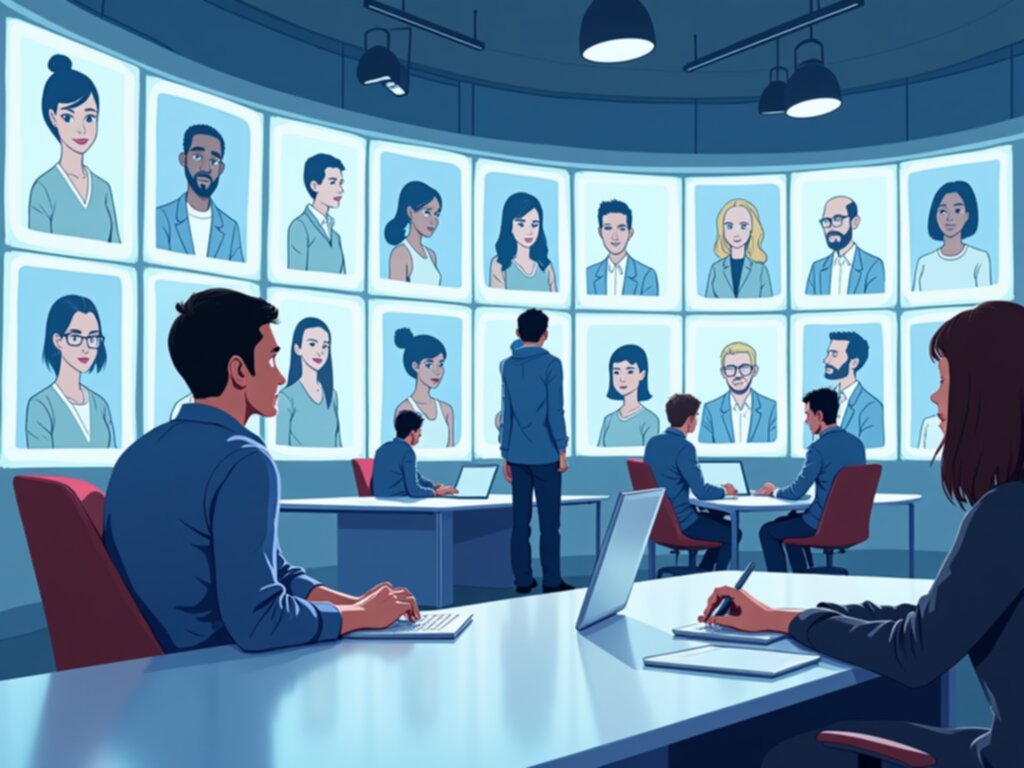Why Onsite Interviews Still Hold Value For Hiring

The digital migration in hiring, accelerated by necessity a few years back, has settled into a kind of default setting for many organizations. We now conduct initial screenings, technical assessments, and even final rounds entirely through screens, optimizing for speed and geographic reach. I've spent a good deal of time analyzing the efficacy of these remote protocols, particularly for roles requiring high degrees of collaboration or deep cultural alignment. It’s easy to mistake efficiency for effectiveness when evaluating a candidate pool, isn't it? But when I look at the data streams concerning long-term retention and project velocity post-hire, a nagging question keeps surfacing: Are we sacrificing something essential by staying entirely within the digital frame?
Consider the sheer volume of data points we miss when the interaction remains purely audiovisual. A perfectly calibrated video presence can mask genuine discomfort or misalignment with team dynamics in ways that a shared physical space simply doesn't allow. I maintain that for certain roles, especially those joining small, tightly-knit engineering teams or senior leadership positions, the physical dimension of the interview still carries substantial predictive power. Let's pause for a moment and reflect on the subtle cues that only surface when two people share the same air pressure.
The first area where the onsite interview retains its edge, in my observation, is the assessment of "ambient fit" and non-verbal communication under pressure that isn't staged for a webcam. When a candidate walks through a real office environment, their reactions to unexpected logistical hiccups—a slow elevator, a noisy break room, an impromptu hallway conversation—offer a raw look at their professional temperament. I'm not talking about making someone walk the plank; I mean observing how they navigate the unscripted reality of the workplace they might inhabit daily. Does their body language shift when they meet someone outside the direct interview panel, perhaps an administrative staff member or an engineer passing by? This incidental data collection, which is impossible to replicate perfectly through scheduled video calls, speaks volumes about their interpersonal calibration and adaptability outside the controlled interview setting. Furthermore, seeing how they interact with a physical prototype, a whiteboard filled with messy scribbles, or even just how they handle waiting in a lobby provides context that a clean, framed video feed strips away. This environmental context helps build a more robust profile than just evaluating their prepared answers to behavioral questions delivered through fiber optics.
Secondly, the onsite visit remains the single best mechanism for truly testing shared problem-solving in a high-fidelity, low-latency environment, which is particularly vital for complex technical roles. When you pull out the large magnetic whiteboard and start drawing system architectures, the lag time inherent in remote collaboration—even with excellent internet—introduces artifacts into the creative process. Onsite, the back-and-forth becomes immediate; you can point simultaneously at the same diagrammatic element, gauge immediate comprehension through shared gaze, and iterate on ideas at the speed of thought, not the speed of broadband. I find that the depth of technical dissection achievable in person allows us to probe foundational knowledge much more effectively than screen-sharing ever permits, as subtle hesitations or accidental disclosures of misunderstanding become clearer in real-time group dynamics. If a team is expected to build something intricate together over the next three years, simulating that intense, shared cognitive load for an hour on location feels like a necessary investment, providing data points on collaboration that purely remote sessions simply fail to capture fully.
More Posts from candidatepicker.tech:
- →Breaking Through Entry-Level IT 7 Signs You're Ready to Move Up the Career Ladder
- →7 Misconceptions About Entry-Level Cybersecurity Jobs That Hiring Managers Want You to Know
- →What Entry Level Jobs Really Hire Without Experience Today
- →The Psychology Behind Job Selectivity Finding Balance Between Standards and Reality During Unemployment
- →7 Effective Steps to Document Workplace Harassment for HR Action A Data-Driven Approach